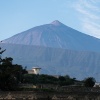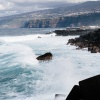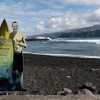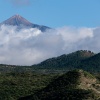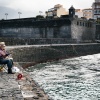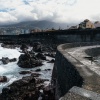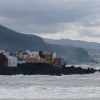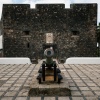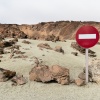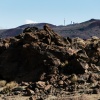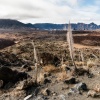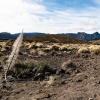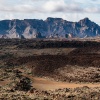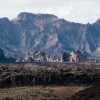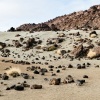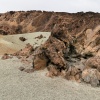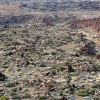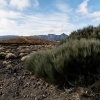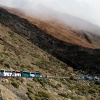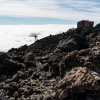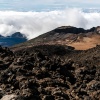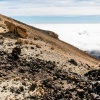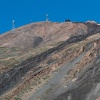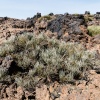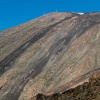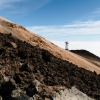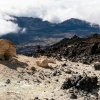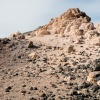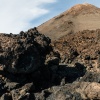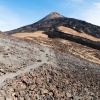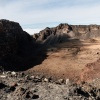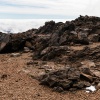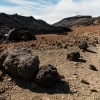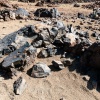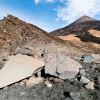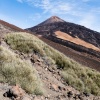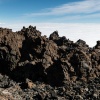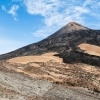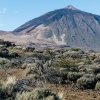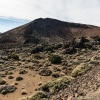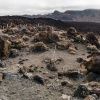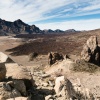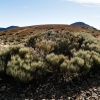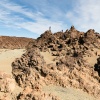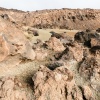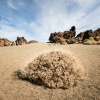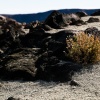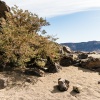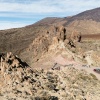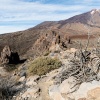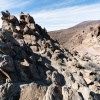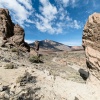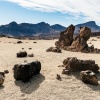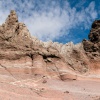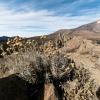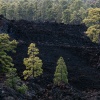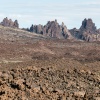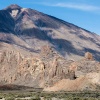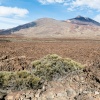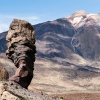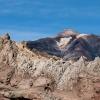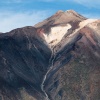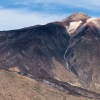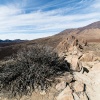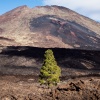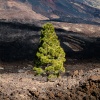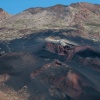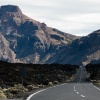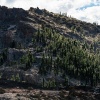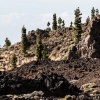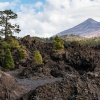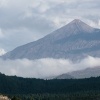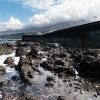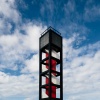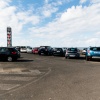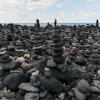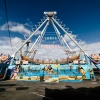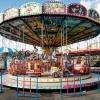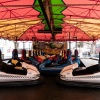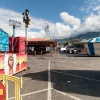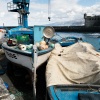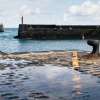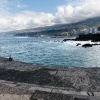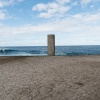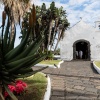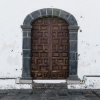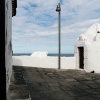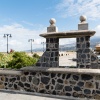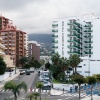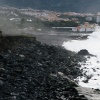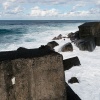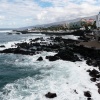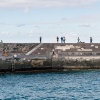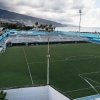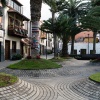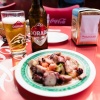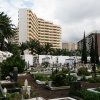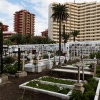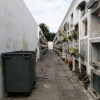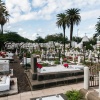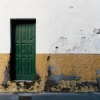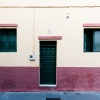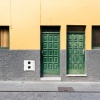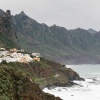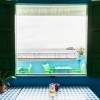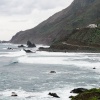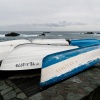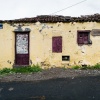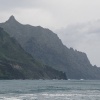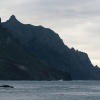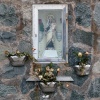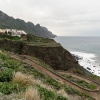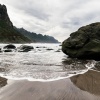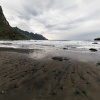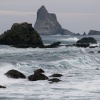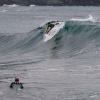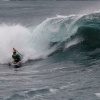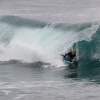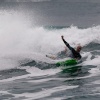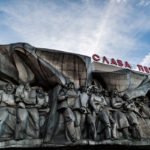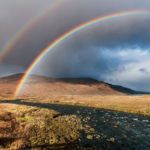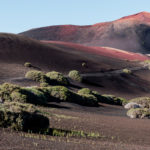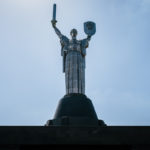El Teide – Tenerife’s Volcano Giant
The Canary Islands are located at the shore of North Africa and only a few couple of hours on the plane away from Europe. All together they are witnesses of Earth’s history and on Tenerife that gets revealed at its best as over there the interior force of the earth created El Teide, an imposing volcano that is to boot Spain’s tallest elevation. The fire mountain is the island’s foundation and is home to all climate zones our planet has on offer.
What is a common thing between Galapagos Islands, Mauritius and Hawaii? Correct. All islands (to name only three of a family of islands) got created by a volcanic hotspot; that is a constant location in the earth’s mantle where the liquid rock mass welds through the earth’s crust. That magma creates giants structures, such as El Teide. Measuring some 7.500 metres in total it is Earth’s third tallest insular volcano.
The whole Canary Islands have a volcanic origin and it’s not only Tenerife that is a product of the Earth’s interior force. On neighbouring islands of Fuerteventura and LanzaroteLanzarote that power is quite awake even and gets exhibited in national parks.
The genesis of Tenerife started some 10 million years ago and was subject to Tengo, Anaga and Adeje. Those three erupting volcanoes are also the reason why Tenerife Island has a triangular shape. After some 5 million years the eruption continued with Cañadas volcano, that rose from the ashes of its now dormant three predecessors. Over thousands of millennia Cañadas then ejected as much magma as we know Tenerife today, with Pico and Viejo cones towering. Those two volcanic craters pretty much joined forces with Pico being in the lead and winner in terms of altitude.
Plunging down into the valley from heaven high, a constant carpet of clouds pushes over the edge of the volcanic caldera these winter days. The light of the low sun masterfully stages that Gobelin tapestry of water vapour when it’s dissolving in the fight against the warming power of our central star. The Cape Town-based Table Mountain and its “Table Cloth” couldn’t deliver a better show.
Driving Southwest to Northeast on the main road through Masca and Icod villages, the island reveals its rugged appearance as more and more shuffled, steep and craggy black volcanic rocks appear. Being towered by small local houses and villages, they break the force of the ever washing strong Atlantic Ocean waves. Here, at the north side of Tenerife, the island appears like South New Zealand’s eastern coast or New Caledonia. Thanks God most of the tourist concrete barracks are located on the southern side, that has more sun, but is much less attractive…
The caldera of El Teide volcano should be visited and explored from two sides. First coming and ascending from the eastern side in TF-21 road leading through La Orotava, and second when driving down again towards Adeje and Santiago del Teide on TF-38 road. The scenic impressions along that trip are truly epic as the variety in geology, colour, vegetation and shape of rocks couldn’t be more diverse. That short road trip lets one witness the complexity and diversity of our planet in a nutshell. With the Timanfaya area the neighbour Canary island of Lanzarote offers a similar spectacular landscape.
Along the ride, that is culminating the actual volcanic cone, visitors can see all climatic zones of Earth. Starting in a dry area, with cactuses and palm trees growing at the bottom, the way leads through lush green coniferous forests being fed by the cloud ceiling. Final stage is the high plain of the volcanic caldera, where moss and pioneer plants dominate the scenery as much as the 3.718 metres high Pico del Teide cone. The road then leads down to the ocean again through an extensive rugged and sharp edged flow of black AA-lava.
The vegetation of the volcanic high plain isn’t lush and that’s not only because it’s pretty elevated. The Guanches, the Canary Islands natives, used the caldera as pasture to feed their cattle. These days only a very close look at the biodiversity reveals indirect traces of the former farmland. Though some endemic species are left, such as the Teide white broom, that delivers a high in demand honey, as well as the Teide Viper’s Bugloss; a blossom scratching at the 3 metres mark and that’s blooming red in early summer. Hikers often only see their yellowish-golden parched remnants.
Hikers may only access the actual summit of El Teide after having got official permission before. Friendly but finickly national park officials check everyone if authorisation has been given. An alternative route to explore the volcano in detail is the connection of hiking trails 12 and 9, that lead down to older Pico Viejo crater. That hike is challenging though as it leads through a 500 metres in altitude measuring field of nasty sharp-edged AA-lava at noticeably rarity of air.
Climbing that field of lava – so called Narices del Teide – was by far the most challenging and exhausting of my volcano photo career. On the way down to Pico Viejo crater you’re almost flying and only some ~20 minutes are needed, but the way up again is a sheer grind as you’ll be confronted with unbraked lava chunks falling down on you when climbing fully equipped as well as with heavy photo stuff through a terrain of thousand needlesticks and razorblade rocks.
And yes, not few lava rocks tumble down on you when other tourists, walking above you, have no clue what happens when they accidently kick off pieces from the brittle lava flow. I mean those type of tourists exploring a volcano wearing sandals, even high heels or the latest handbag of Michael Kors. Trying to stage their faces with Snap Chat dog filters they only care about their selfie massacre but not what happens when kicking off lava chunks… In the afternoon clouds start to push in carrying a coldness biting even through best outdoor wear. That’s the moment when a lovely hike becomes quite a torture.
Though on El Teide’s hiking paths one is pretty much save and away from the touristic bustle that’s happening around summit and valley station of the cable car. Of course a volcano day visit is part of many all-inclusive tourists; what shouldn’t be seen negative, as El Teide is one of the very few easily accessible volcanoes worldwide allowing visitors on its shoulder. However, when humans fight about parking space around the valley station then the whole thing becomes a sad drama…
The volcano is much more than most apparent Pico del Teide cone as well as its cable car. Beside some cinder cones further west telling of recent eruptions, it is first and foremost the impressive caldera that’s giving an impression of the fire mountain’s actual dimension as it measures an impressive 17×10 kilometres. Having an in entirety look at the eruption process El Teide’s magma chamber continuously collapsed making Pico del Teide only being the volcanoes latest form of appearance.
If the volcano’s superlative makes it to emotionally capture even only 10% of its visitors, to finally make them reconsidering their approach to nature and connected human globalisation, then the inrush of sandal and handbag wearers at the cable car valley station is worth the “efforts” of the world’s Monarchs, Ryan Airs, Tomas Cooks and Airberlins. Of course also many children experience their first volcanoes. With dropped jaws they gaze in amazement at what nature has on offer. Big eyes, curiosity and a broadened mind for the knowledge hungry is never wrong.
In Tenerife’s north, where narrow Canary roads can hardly handle two meeting cars, the island’s unique coast continues and becomes even more spectacular near Almágica and Benijo fishermen villages. The ever washing head high ocean waves press through dramatic rocks of volcanic origin.
When meeting a bus on those roads, then things becomes super tight at Tenerife’s end of the world, where at Casa Africa one can enjoy an island-wide known excellently grilled squid. While enjoying tentacle by tentacle you can sit, watch the ocean as well as boys enjoying their surf or wave ride. They indulge in their hobby for hours even when it’s winter and temperatures are less attractive.

